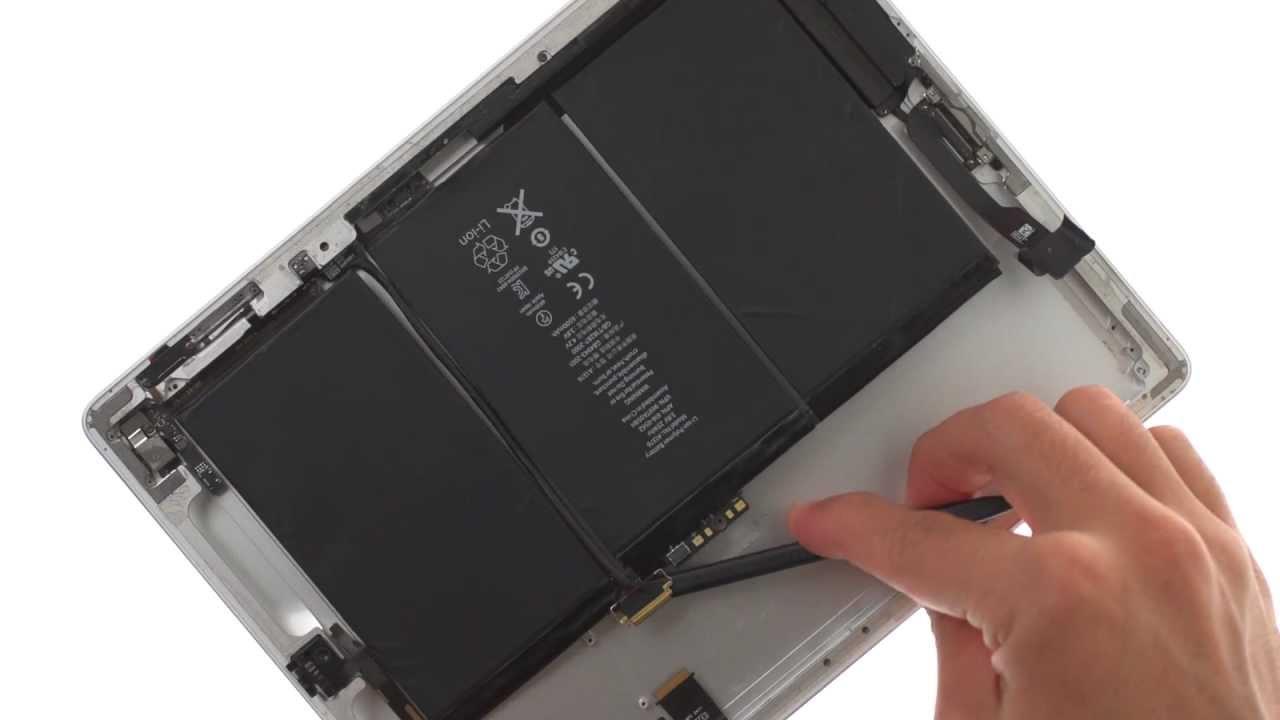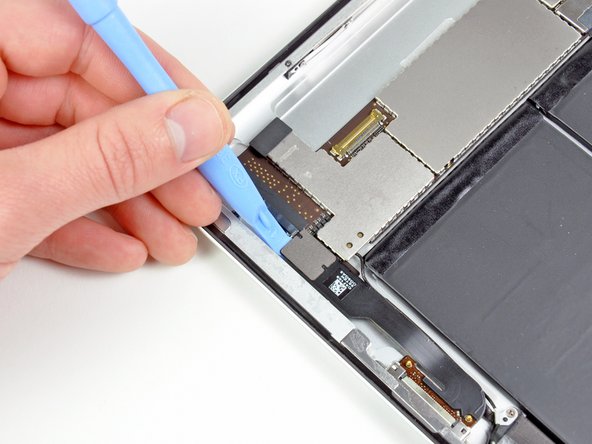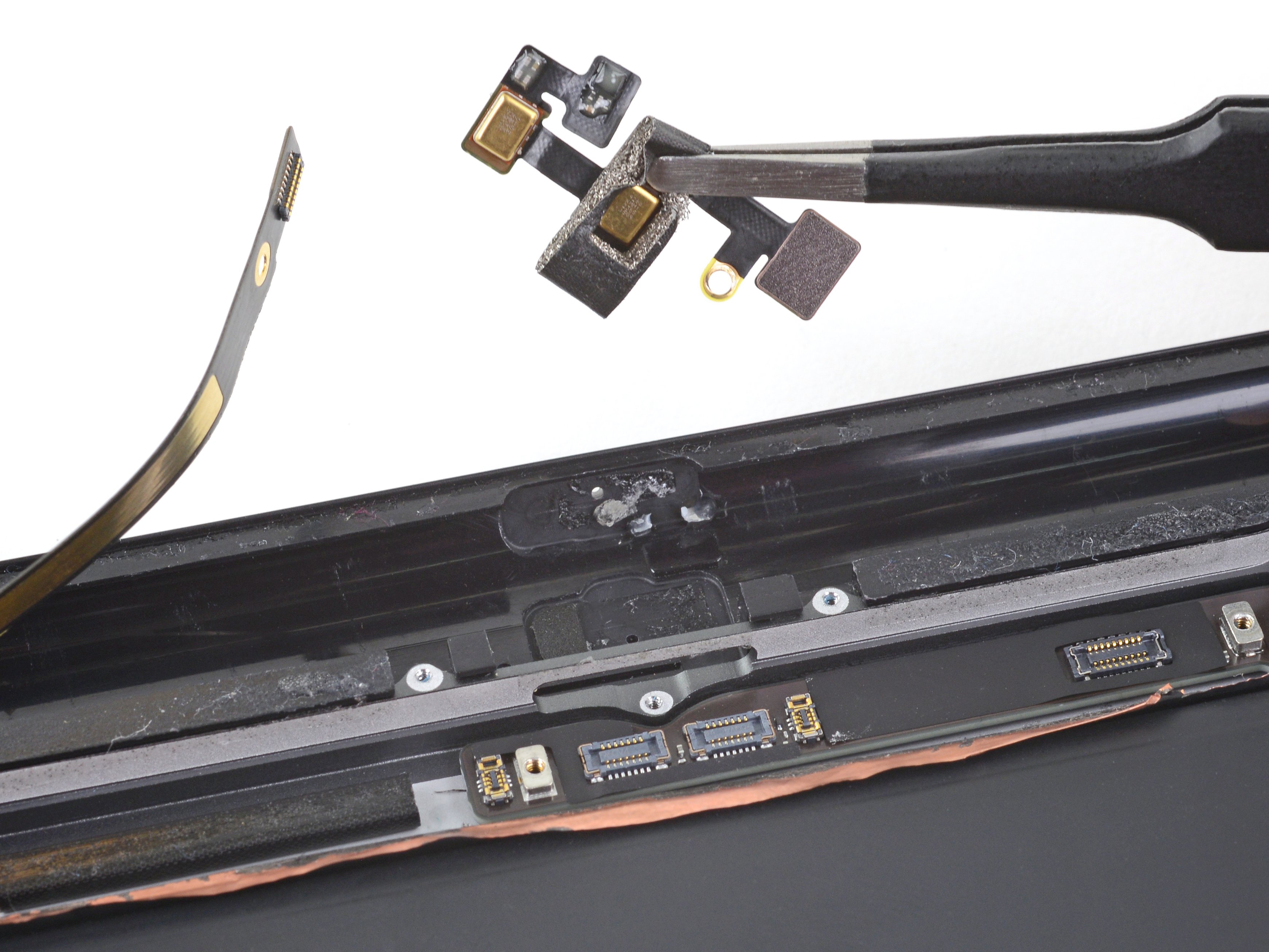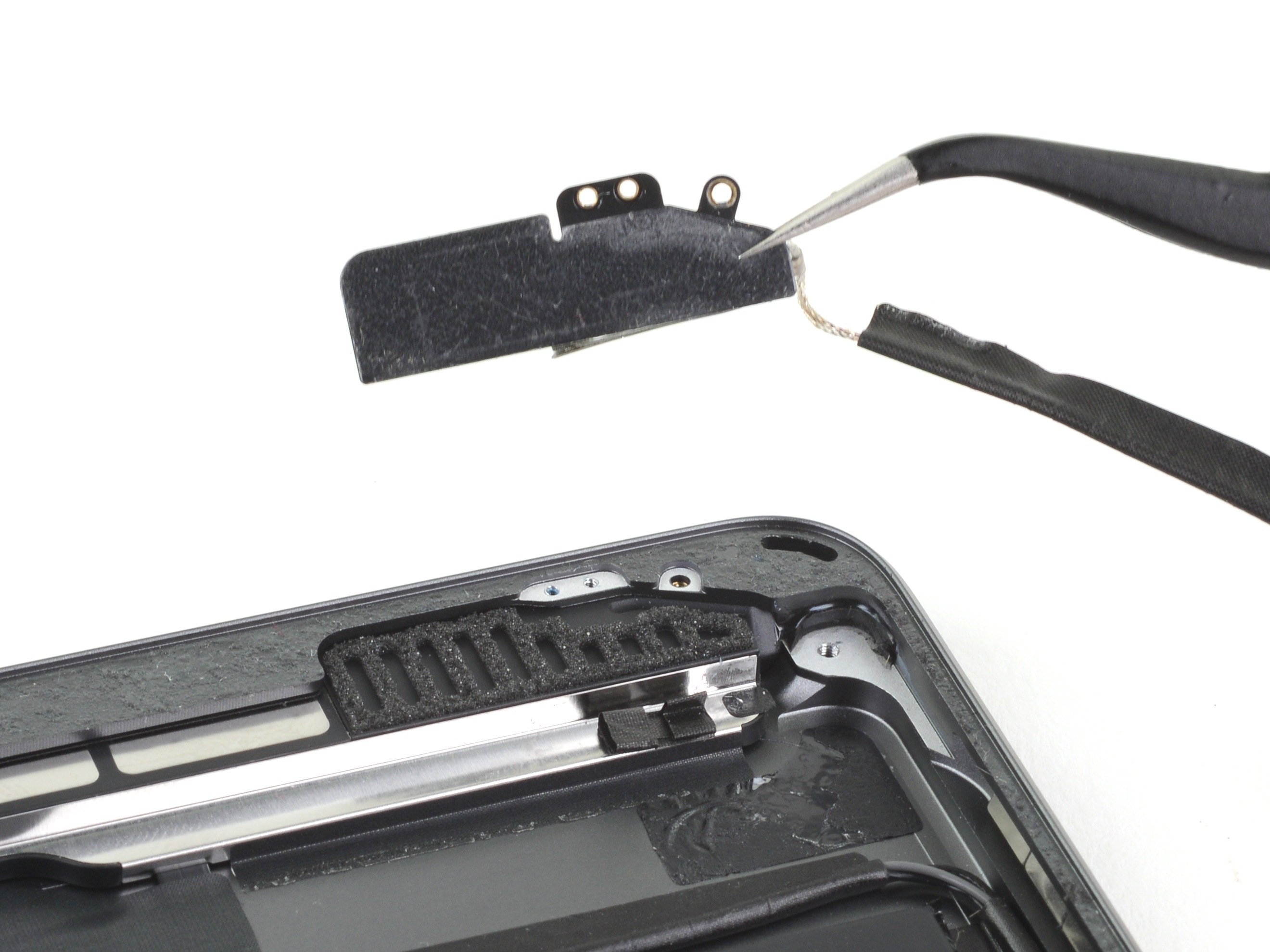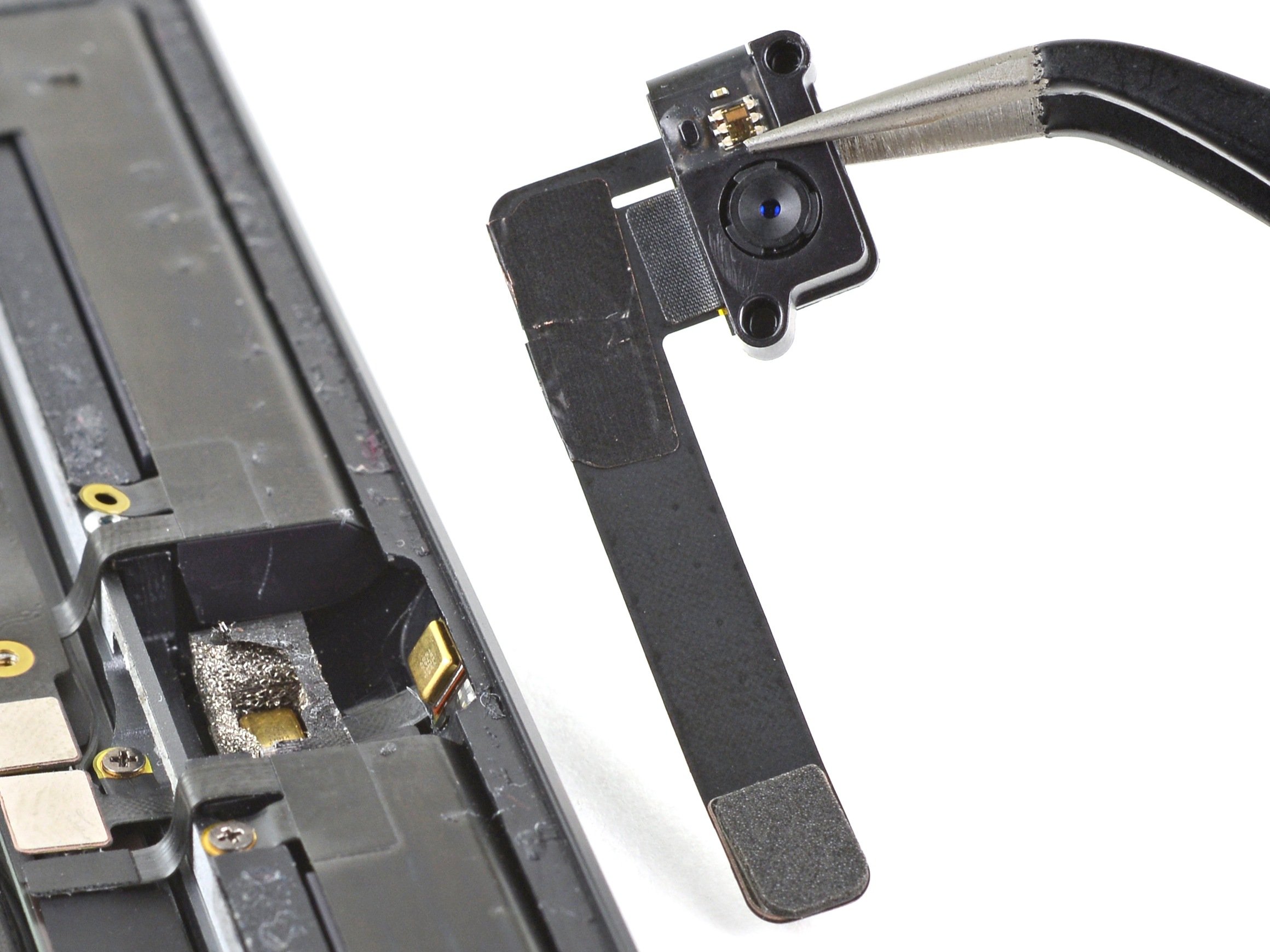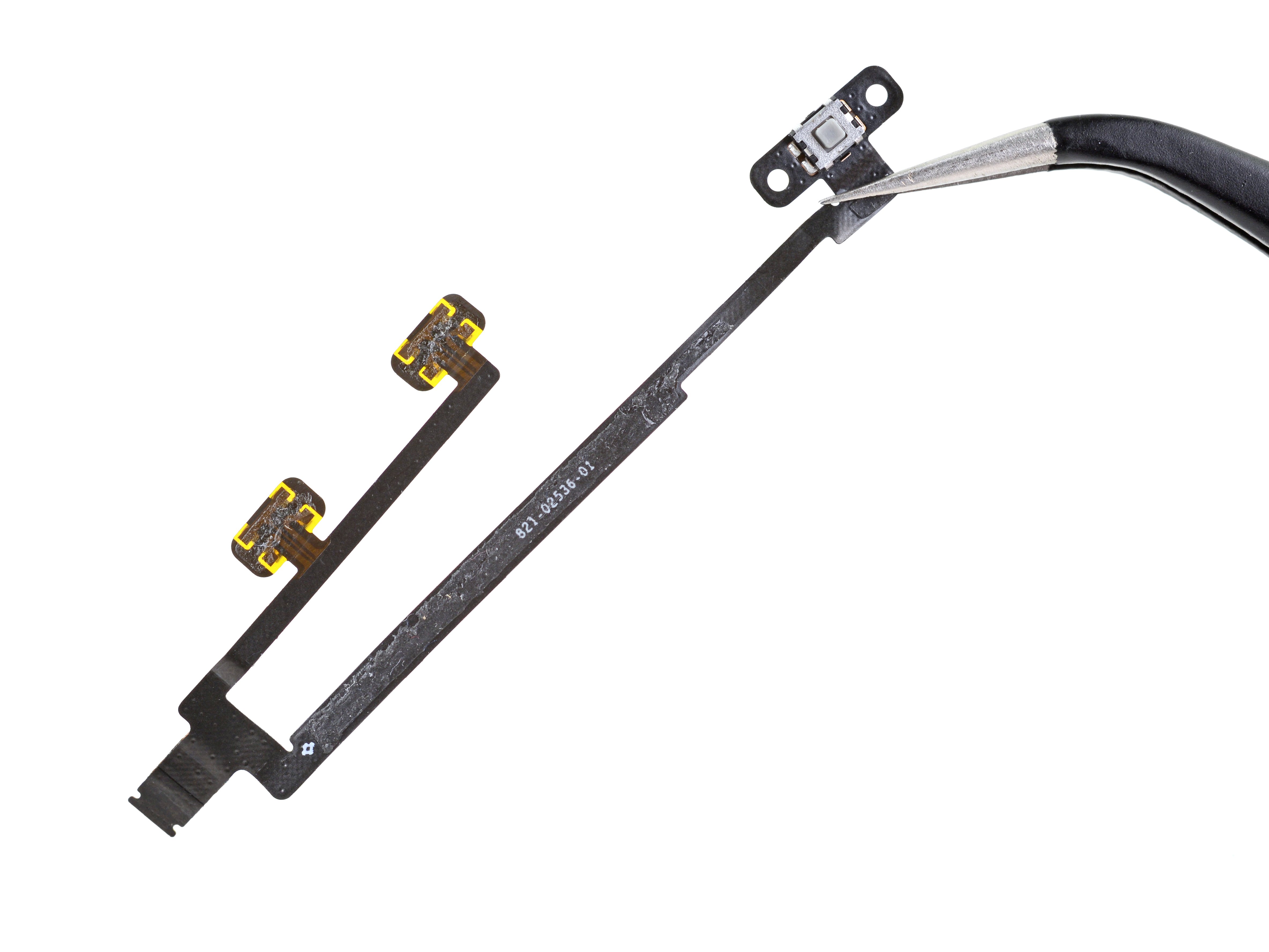DIY Guide to Replace iPad 2 GSM Battery
Duration: 45 minutes
Steps: 58 Steps
Hey there, repair champ! Before you dive into this adventure, remember to keep it cool and take your time. If you hit a snag or need a helping hand, don’t hesitate to schedule a repair. You’ve got this!
Ready to give your iPad 2 a fresh start? This guide will help you swap out that tired battery! If you notice your battery is looking a bit puffy, make sure to take the right safety measures. Just a heads up, some of the images in this guide feature the Wi-Fi model, so the insides might look a tad different from the cellular version. But don’t worry, the steps are pretty much the same for both models, except where we mention otherwise. If you need help, you can always schedule a repair.
Step 1
Before diving in, give your microwave a little TLC! A quick clean will ensure that any stubborn gunk doesn’t hitch a ride on your iOpener. Trust us, your future self will thank you!
– Pop the iOpener right in the middle of the microwave and let it warm up!
Tools Used
Step 2
Keep an eye on that iOpener during your repair adventure! If it gets too hot, it might just pop on you. Aim to keep it under 100˚C (212˚F) for safety.
If your iOpener looks like it’s been hitting the gym and is a bit swollen, steer clear of it.
If the center of your iOpener is still too toasty to handle, hang tight and let it cool down a bit more before giving it another heat-up. A well-heated iOpener should stay cozy for about 10 minutes.
– Warm up your iOpener for about thirty seconds. That’s just enough time to dance a little jig while you wait!
– As you go through the repair steps, keep an eye on your iOpener. If it starts to cool down, give it another thirty seconds in the microwave to keep the heat going. You’re doing great!
Tools Used
Step 3
Caution: The iOpener is going to be super toasty, so handle it with care! An oven mitt might just be your best buddy here.
– Carefully take the iOpener out of the microwave, gripping one of the flat ends to steer clear of that hot center. You’ve got this!
Tools Used
Step 4
If you’re not rocking a microwave, don’t worry! Just pop your iOpener in some boiling water to get it nice and toasty.
– Grab a pot or pan and fill it up with enough water to give your iOpener a nice, warm bath.
– Bring that water to a rolling boil and then turn off the heat. Safety first!
– Carefully place your iOpener into the hot water for about 2-3 minutes. Make sure it’s fully submerged and soaking up all that heat.
– Using tongs (because we want to keep those fingers safe), fish out the heated iOpener from the water.
– Give the iOpener a good towel dry to make sure it’s nice and ready to go.
– And voilà! Your iOpener is all set for action! If it needs a little more warmth, just repeat the process: heat the water to a boil, turn off the heat, and let the iOpener soak for another 2-3 minutes. If you need help, you can always schedule a repair.
Tools Used
Step 5
– Grab a SIM eject tool or a trusty uncoiled paperclip and gently pop out that SIM card tray like a pro!
Step 6
– Gently slide the SIM tray out of its cozy little home in the iPad 2 and set it aside.
– If you’re swapping out the SIM card, just pop it out of its tray and slide in the new one like a pro.
Step 7
Put on those snazzy safety glasses to keep your peepers safe, and watch out for that LCD screen – it’s more delicate than it looks!
– Got a cracked display glass? No worries! Let’s keep it from shattering further and protect yourself while you work by using some tape.
– Grab some clear packing tape and lay down overlapping strips over your iPad’s display until it’s completely covered. You got this!
– Now, just follow the rest of the guide as best as you can. Just a heads up, once the glass starts breaking, it might keep cracking as you go. You might need to use a metal prying tool to carefully scoop out the glass. If you need help, you can always schedule a repair.
Step 8
Just a friendly reminder: while you’re getting your hands dirty, keep those peepers safe! We highly recommend rocking some safety glasses to shield yourself from any sneaky glass shards that might try to escape. Stay safe and repair on!
– Place the iOpener gently along the right edge of your iPad, making sure to smooth it out for a snug fit. We want it to be buddies with your device!
– Give the bag some time to work its magic on the iPad—about 90 seconds should do the trick—before you dive into opening that front panel.
Tools Used
Step 9
It might take a bit of elbow grease to slip that trusty opening tool between the glass and plastic. Just take your time and be gentle—wiggle that plastic tool back and forth as needed, and you’ll be in in no time!
– Hey there! Notice that little gap in the iPad’s adhesive ring at the upper right corner? It’s about 2.0 inches (~5 cm) from the top. Let’s take advantage of that tiny weakness!
– Now, line up your tool with the mute button. Gently slide the tip of a plastic opening tool into that gap between the front glass and the plastic bezel. Just get the very tip in there, enough to give that crack a little nudge.
Step 11
– With the plastic opening tool snugly positioned between the front glass and the plastic bezel, gently slide a plastic opening pick into the gap right alongside the tool. You’re doing great!
Step 12
– Gently take out the plastic opening tool from your iPad, and slide the opening pick a little deeper under the front glass, about half an inch down. You’re doing great!
Step 14
The adhesive is super strong, so you might need to put in some elbow grease. Just take your time and be gentle with it!
If you spot the tip of the opening pick peeking out from under the front glass, gently pull it out a smidge. While diving in this deep with the pick won’t harm anything, it might leave some sticky adhesive traces on the LCD. Just a heads up!
– While the iOpener is warming up the bottom edge, start peeling away the adhesive from the right edge of your iPad.
– Gently slide the opening pick down along the iPad’s edge, freeing up that pesky adhesive as you go along.
Tools Used
Step 15
As you peel away the adhesive, you might want to slide that warm iOpener back onto the right edge of the iPad. This little dance depends on how long your iPad has been chilling while you were busy working your magic.
– If your opening pick is feeling a bit clingy in the adhesive, just give it a gentle ‘roll’ along the side of the iPad to help it break free and keep that adhesive at bay.
Tools Used
Step 16
– Before you dive in and pop that first opening pick from the bottom corner of your iPad, slide a second pick under the right edge of the front glass. This little buddy will help keep the adhesive from getting all clingy again.
– Give your iOpener a little reheat love, then place it at the top edge of the iPad. You’re doing great!
Tools Used
Step 17
The Wi-Fi antenna is snugly secured to the bottom right edge of the iPad’s rear case with screws and a cable. Since the Wi-Fi antenna is positioned in a particular way, be sure to handle it carefully to avoid any permanent damage to this essential component.
– Alright, folks, it’s time to tread carefully! We’re about to tackle some delicate work.
– You’ll need to gently free the adhesive that’s holding the antenna to the front panel. Just be super careful not to harm the fragile bits connecting the antenna to the bottom of the iPad. Take your time and follow the upcoming steps closely!
Step 18
Hey there! Just a heads-up: try not to slide the pick past the bottom right corner. You could accidentally mess with the Wi-Fi antenna, and we definitely want to keep that connection strong!
– Gently glide that opening pick around the bottom right corner of your iPad to break free the adhesive. You’ve got this!
Step 19
As you glide the opening pick along the bottom right edge of the front panel, keep an eye out! The Wi-Fi antenna is sneaky and hangs out close to the corner, so be gentle—if the adhesive gets too wild, it could get severed. You’ve got this!
Just a friendly tip: don’t yank that pick all the way out from under the front glass! Give it a gentle tug so that about 1/8″ (3 mm) of the tip stays snugly in place. You’ve got this!
– Gently glide the opening pick along the bottom edge of your iPad to loosen the adhesive near the Wi-Fi antenna. You’re doing great!
Step 20
– After you’ve navigated past the Wi-Fi antenna (that’s about 3″ (75 mm) from the right edge, or right next to the home button), gently slide the opening pick back in all the way.
– Now, give that pick a little nudge to the right to break free the adhesive holding the Wi-Fi antenna to the front glass. You’re doing great!
Step 21
Keep the iOpener’s heating time to a minute max, and give it a cool two-minute break before you heat it up again. Your device will thank you!
If the adhesive has cooled down a bit too much along the bottom edge, give that iOpener a little reheat to warm things up where you’re working your magic.
– Keep on peeling that adhesive along the bottom of your iPad! Gently pull the opening pick out far enough to navigate around the home button, and then slide it back in to a depth of about 1/2 inch (10 mm) once you’ve passed the home button. You’re doing great!
Tools Used
Step 22
– Keep peeling that adhesive along the bottom edge of the iPad like a pro!
– Slide the opening pick snugly under the front glass near the home button and let it chill there.
Step 24
If the adhesive has cooled down a bit too much, just swap in a fresh iOpener along the top edge and keep going. If your iOpener is feeling a little chilly, give it a quick reheat and get back to work!
– Gently glide the opening pick along the top edge of your iPad, giving it a little tug to navigate around the front-facing camera bracket.
– The adhesive here is pretty tenacious, so you might need to put in a bit of elbow grease. Take your time and stay steady to avoid any mishaps that could lead to an unintentional ‘oops’ moment with your iPad.
– If your opening pick feels like it’s stuck in the adhesive jungle, try giving it a little ‘roll’ as demonstrated in step 9.
Tools Used
Step 25
If the adhesive is nice and toasty, go ahead and take the iOpener off the iPad for a bit of ease. But if it’s still feeling a bit clingy, just give the iOpener another heat-up and place it on the left edge while you get to work.
– Keep peeling away that sticky adhesive at the top edge of your iPad, and gently slide the opening pick around the top left corner. Just take your time and enjoy the process!
Tools Used
Step 26
The digitizer cable hangs out about 2″ (50 mm) from the bottom of your iPad. Once you get to around 2.25″ (60 mm) from the bottom, it’s time to stop sliding that pick. You’re doing great!
– Gently glide the opening pick along the left edge of your iPad, letting it do its thing and peel away that pesky adhesive. No worries, the adhesive here is pretty thin thanks to the digitizer along the entire left side. Just remember, keep the pick at a safe depth—no more than half an inch (10 mm)—to avoid any mishaps with the digitizer. You’ve got this!
Step 27
Be super careful! The bottom of the digitizer cable is just about 1″ (25 mm) from the bottom of the iPad. Take your time and work gently to avoid cutting this cable. You’ve got this!
– With the trusty opening pick still nestled under the bottom edge of your iPad, gently free the adhesive from the bottom left corner. You’re doing great!
Step 28
– Take one of those handy opening picks and gently nudge up the bottom right corner of the iPad. Once it’s popped up, give it a friendly little grab with your fingers!
Step 29
Watch out for any sticky adhesive still lurking around! Grab an opening pick and gently slice through any adhesive that might be keeping that front panel snug and secure.
– Grab your iPad by the top and bottom right corners and gently twist the front glass away from the device. You’ve got this!
– When putting everything back together, take a moment to use a microfiber cloth and some compressed air to give that LCD a little TLC. A dust-free, fingerprint-free screen is the way to go before you seal it up!
Step 30
– Get ready to tackle this step! Unscrew those four 2.0 mm Phillips screws that are holding the LCD snugly to the rear case. You’ve got this!
Step 31
– Gently lift the LCD from the edge nearest to the volume buttons and swing it out of the rear case like a pro.
– Carefully place the LCD on the front panel, just like you see in the second picture.
Step 32
Remember to gently lift the hinged retaining flaps instead of the sockets themselves. You’ve got this!
Check out the second picture where the retaining flaps are marked in a cheerful red!
– Gently use the edge of a plastic opening tool to lift up the retaining flaps on the two digitizer ribbon cable ZIF sockets. You’ve got this!
Step 33
– Grab your trusty plastic opening tool and gently pry that digitizer cable away from the shields on the logic board. It’s like peeling a sticker, but way cooler!
– Now, with a steady hand, carefully peel the digitizer cable off the adhesive that’s holding it snugly against the side of the rear case. Take your time; it’s worth it!
Step 34
– Gently wiggle the digitizer ribbon cable and pull it straight out of its two cozy sockets on the logic board. You’ve got this!
Step 35
To get that front panel assembly off, you’ll want to gently slide the ribbon cable out from between the case and the LCD. Just give the LCD a little nudge to create some space, and you’re on your way!
– Gently lift the LCD from the edge that’s farthest away from the digitizer cable and flip it back towards the rear case, kind of like you’re closing a book—smooth and easy does it!
– While keeping the LCD elevated, carefully slide the front panel away from your iPad. Just watch out for that digitizer cable; we don’t want it getting caught on anything back there!
Step 36
To dive into the iPad’s inner workings, let’s gently lift the LCD out of its cozy case.
– Gently lift the LCD from the edge nearest to the volume buttons and flip it out of the rear case—think of it like turning a page in your favorite book.
– Carefully place the LCD face down on a clean surface. A soft cloth underneath can help keep it scratch-free and happy.
Step 37
Be gentle when disconnecting the connector—pulling it straight up might not be the best move!
– Gently place the LCD next to the rear panel, giving it a cozy spot.
– Grab your trusty plastic opening tool and nudge the display data cable lock upwards with a little finesse.
– Carefully wiggle the display data cable out of its socket, like it’s ready for a little adventure.
Step 39
– If you’ve got it, grab a plastic opening tool to gently lift off that pesky piece of tape hiding the dock connector cable.
– Carefully use the edge of your plastic opening tool to nudge the dock connector cable’s connector up from its cozy spot on the logic board.
– Now, peel that dock connector ribbon cable away from the rear panel like a pro!
Step 40
– Gently lift the speaker cable connector straight up from its cozy spot on the logic board. You’ve got this!
Step 41
Just a friendly reminder: make sure you’re prying up on the hinged retaining flap, not the socket itself. You’ve got this!
– Grab your trusty plastic opening tool and gently lift the retaining flap on the headphone jack and front camera cable ZIF socket. You’ve got this!
– Carefully peel the headphone jack and front camera cable away from the rear case. Easy peasy!
Step 42
– Gently wiggle the headphone jack and front camera ribbon cable, then pull it straight out of its cozy home on the logic board. You’ve got this!
Step 43
Be careful not to pull the cable up as you disconnect it!
– Grab a plastic opening tool and gently lift the retainer that’s holding the upper component board cable connector snugly in its socket on the logic board. You’ve got this!
– Now, carefully pull that connector away from its cozy spot on the logic board. Easy peasy!
Step 44
– Unscrew the three 2 mm Phillips screws that are holding the SIM card slot snugly to the rear panel. You’ve got this!
Step 45
– Unscrew the two 2.9 mm Phillips screws that are holding the headphone jack in place at the top edge of the rear panel. You’ve got this!
Step 46
– Grab a trusty plastic opening tool and gently coax that headphone jack out of its cozy spot at the top of the rear panel.
– Carefully peel the headphone jack/SIM slot assembly away from the top edge of the communications board, like unwrapping a present!
Step 47
– First up, let’s tackle those two 2.1 mm Phillips screws that are holding the logic board bracket snugly to the rear case, right by the digitizer cable socket. Grab your trusty screwdriver and get to work!
– Once those screws are out of the way, gently lift the logic board bracket off the rear case. You’re making great progress!
Step 48
– Unscrew those four 2.6 mm Phillips screws holding the logic and communications boards snugly against the rear panel. You’ve got this!
Step 49
– Gently slide the edge of a plastic opening tool under the logic board and lift it up from the sticky adhesive that’s holding it to the rear case. You’ve got this!
Step 50
Hold your horses! Don’t try to yank it out just yet. There are still three antenna cables hanging on for dear life.
– Gently lift the logic board out from the back case and give it a little twist toward the battery.
Step 51
– Grab a trusty plastic opening tool and gently disconnect both antenna connectors from their cozy sockets on the communications board. You’ve got this!
Step 54
– Pop that iOpener in the microwave for a quick minute to get it warmed up.
– Once it’s nice and toasty, place it on the back of your iPad, just right of center (that’s the side away from the rear-facing camera). Let it chill there for 90 seconds to help loosen up the battery adhesive.
– Next, slide the iOpener to the center of the back of your iPad and give it another 90 seconds to work its magic.
– Now, shift the iOpener over to the left edge (where the rear-facing camera is) and let it hang out there for another 90 seconds.
Tools Used
Step 55
If the adhesive is putting up a fight, give the rear panel a little warmth and give it another go.
– Let’s kick things off with the battery cell that’s closest to the dock connector. Grab your trusty plastic opening tool and gently slide it under the edge of the battery nearest to the logic board void. This will create just enough space to slip in the flat end of a spudger.
– Now, take that spudger and glide it along the two long sides of each battery cell. This will help you completely detach them from the adhesive that’s holding them snugly against the rear case.
Tools Used
Step 56
Handle the battery connector board with care—no extreme bending, please! And when you’re gently prying around that little post on the aluminum rear case, just take it easy and be cautious. You’ve got this!
– Before you gently lift the middle battery cell, grab a plastic opening tool and carefully nudge the battery connector board away from the rear panel. You’ve got this!
Step 57
– Now, grab your trusty spudger and gently work it along the long edges of the middle battery cell to break that adhesive seal. It’s like giving your battery a little spa day!
– Once you’ve tackled the middle cell, show some love to the last battery cell by repeating the process. If things get a bit stubborn, don’t hesitate to give the case a quick reheat!
Tools Used
